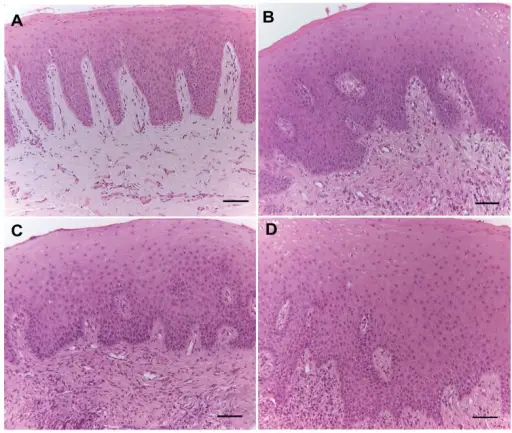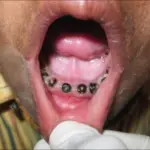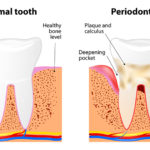Gingivitis is an inflammation of the gums, usually caused by a bacterial infection.
What is the Pathology of Gingivitis?
The pathology of gingivitis is:
-Etiology: The cause of gingivitis is poor oral hygiene.
-Genes involved: None.
-Pathogenesis: The sequence of events that lead to gingivitis are bacterial plaque, which acts to initiate the body’s host response. This, in turn, can lead to the destruction of the gingival tissues, which may progress to the destruction of the periodontal attachment apparatus.
-Morphology: The morphology associated with gingivitis shows red and puffy gums, that bleed easily when the person brushes their teeth.
How does Gingivitis Present?
Patients with gingivitis typically affect children aged 3-6 years old, but may involve many ages. The symptoms, features, and clinical findings associated with gingivitis include swollen gums, and halitosis.
How is Gingivitis Diagnosed?
Gingivitis is diagnosed based on clinical assessment data acquired during a comprehensive periodontal exam.
How is Gingivitis Treated?
Gingivitis is treated with scaling, root planing, curettage, mouth washes containing chlorhexidine or hydrogen peroxide, and flossing.
What is the Prognosis of Gingivitis?
The prognosis of gingivitis is good.



